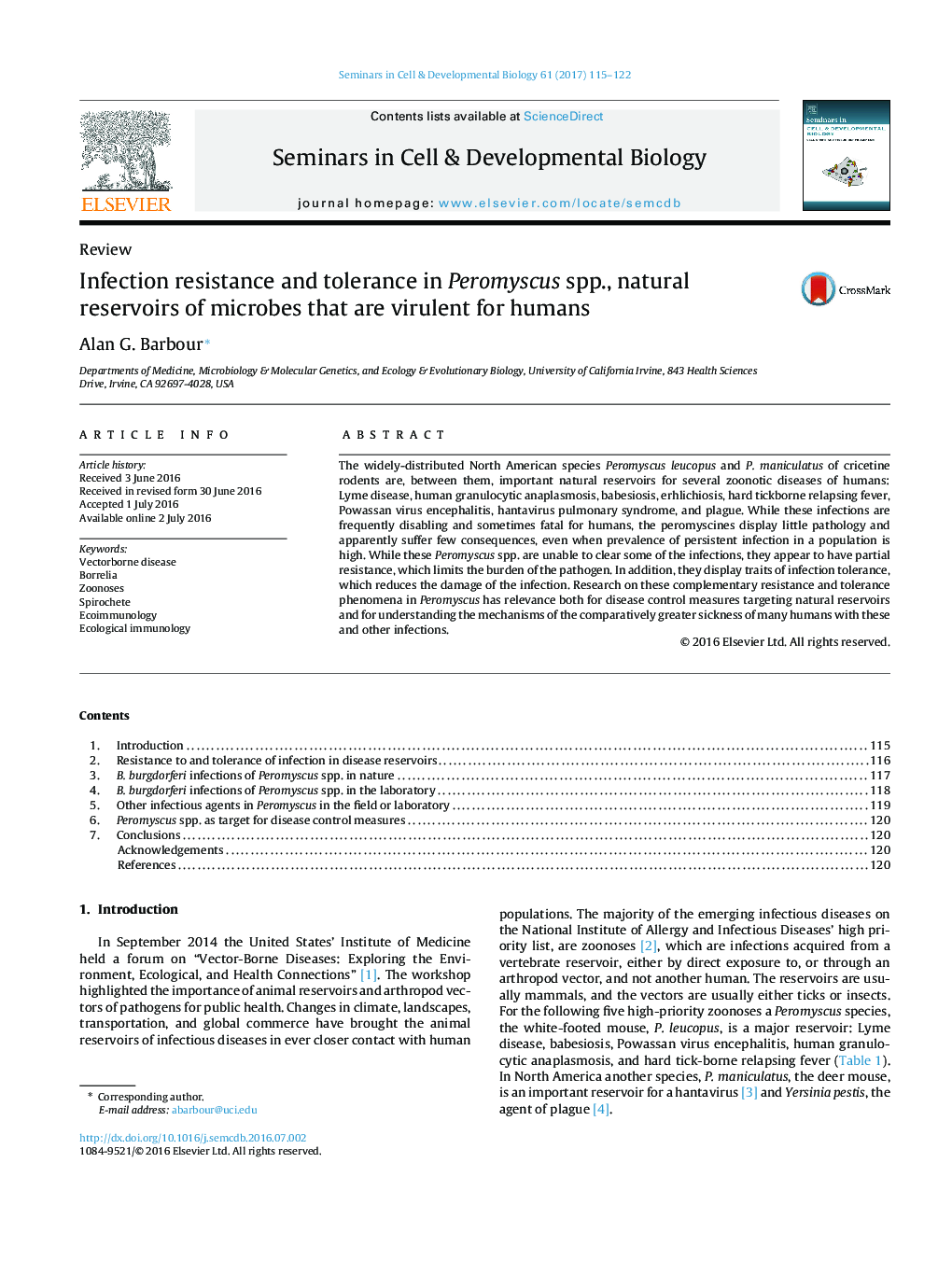| Article ID | Journal | Published Year | Pages | File Type |
|---|---|---|---|---|
| 5534868 | Seminars in Cell & Developmental Biology | 2017 | 8 Pages |
The widely-distributed North American species Peromyscus leucopus and P. maniculatus of cricetine rodents are, between them, important natural reservoirs for several zoonotic diseases of humans: Lyme disease, human granulocytic anaplasmosis, babesiosis, erhlichiosis, hard tickborne relapsing fever, Powassan virus encephalitis, hantavirus pulmonary syndrome, and plague. While these infections are frequently disabling and sometimes fatal for humans, the peromyscines display little pathology and apparently suffer few consequences, even when prevalence of persistent infection in a population is high. While these Peromyscus spp. are unable to clear some of the infections, they appear to have partial resistance, which limits the burden of the pathogen. In addition, they display traits of infection tolerance, which reduces the damage of the infection. Research on these complementary resistance and tolerance phenomena in Peromyscus has relevance both for disease control measures targeting natural reservoirs and for understanding the mechanisms of the comparatively greater sickness of many humans with these and other infections.
